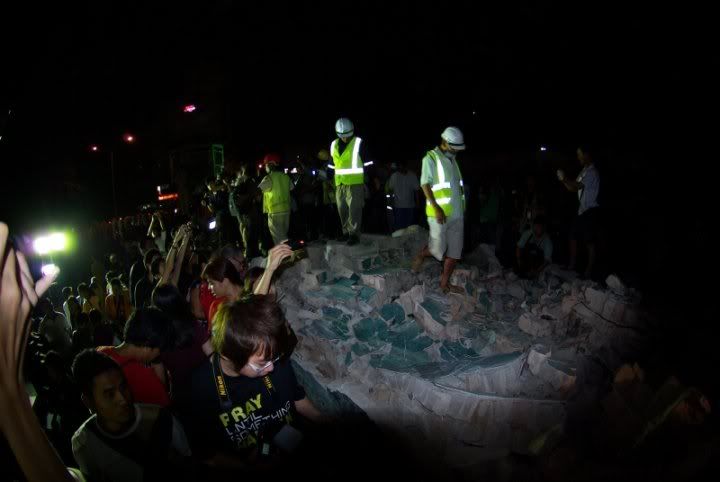Penamat riwayat Penjara Pudu














A boy takes away bricks from the debris of part of the demolished 394-metre (431-yard) wall surrounding the Victorian-era jail in down town Kuala Lumpur on June 21, 2010. A controversial plan to tear down part of a 115-year-old jail for commercial development in the Malaysian capital has drawn fierce criticism from heritage enthusiasts. During World War II Japanese occupation forces used the jail to hold Allied prisoners-of-war, many of whom were tortured and executed there.






MULUT dua buah jentolak itu dengan rakus memecahkan tembok tebal di hadapannya tanpa belas kasihan. Dalam sekelip mata tembok setinggi 4.5 meter itu runtuh menyembah bumi.
Sisa-sisa runtuhan yang terdiri daripada ketulan batu-bata itu kemudian berebut-rebut dikutip oleh orang ramai yang berada di kawasan tersebut untuk dibawa pulang.
Tindakan itu ada asasnya kerana tembok tebal yang dirobohkan itu bukan sebarangan bangunan. Ia merupakan sisa tembok Penjara Pudu yang satu ketika dahulu menjadi 'rumah' kepada sejumlah penjenayah yang antaranya paling terkenal dalam sejarah perundangan di Malaysia.
Antara yang diingati sudah pasti Botak Chin atau nama sebenarnya Wong Swee Chin, seorang ketua penjenayah bersenjata yang digeruni sekitar 1970-an. Dia akhirnya digantung sampai mati di Penjara Pudu pada 11 Jun 1981.
No comments:
Post a Comment